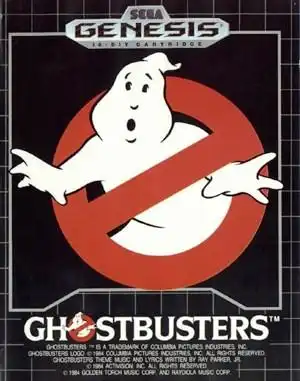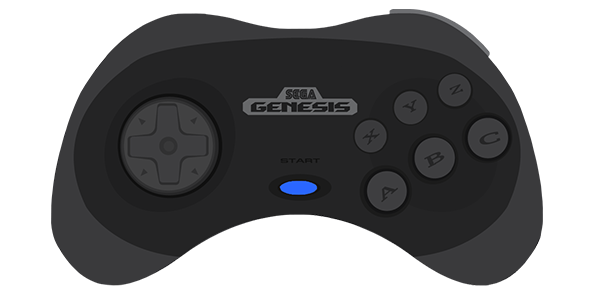Stepping back into the 16-bit era often brings a flood of memories, especially when iconic movie franchises crossed over into the world of video games. While some movie tie-ins were instant classics and others... well, less so, the Ghostbusters Sega Genesis game holds a particular place in the console's library. It wasn't a direct port of the infamous 1984 computer game, nor was it tied to the Ghostbusters II movie. Instead, SEGA and Compile crafted something entirely new for Genesis owners in 1990.
But how does this unique take on busting ghosts stack up decades later? Let's fire up the Genesis and find out.
What Kind of Ghostbusters Game Is It?
Unlike the strategic simulation of the 1984 game, the Ghostbusters game on Genesis is primarily a run-and-gun platformer with a dash of exploration. Developed by Compile, known for their solid action titles, it features a completely non-canonical story. Forget Gozer or Vigo; this time, an earthquake has unleashed paranormal chaos, shattering a mystical tablet that needs reassembly.
You get to choose your starting Ghostbuster from Peter Venkman, Ray Stantz, or Egon Spengler – each with slightly different stats. Noticeably absent from the playable roster is Winston Zeddemore. Equipped with your trusty Proton Pack, goggles, and bombs, you venture into spooky, side-scrolling levels.
Bustin' Makes Me Feel Good... Or Does It?
Gameplay involves navigating large, somewhat nonlinear stages filled with aggressively respawning enemies. You'll run, jump, climb ladders (where you're surprisingly invulnerable but can't shoot!), and blast away at spectral foes. Defeating enemies and finding hidden items earns you cash, which you can use to upgrade your gear – a crucial step, as the default proton stream is... adequate. The spread shot upgrade is often highlighted by players as a must-have.
Progression isn't just about reaching the end of a level. Each stage has a "middle ghost" mini-boss you need to trap before tackling the final boss. A helpful map on the pause screen shows you where these mini-bosses lurk. There's no strict time limit, allowing you to explore thoroughly, though constant enemy respawns can make backtracking tedious.
Boss battles are varied, featuring creatures like dragons, the Grim Reaper, and even a fire-breathing Stay Puft (not exactly like the movie!). Successfully completing all main stages and restoring the tablet leads to a final showdown, but be warned: you might have to re-fight some earlier bosses first! The difficulty can be quite high, with some stages feeling particularly challenging, especially the infamous dark fire stage that practically requires infrared goggles found within it. Enemy AI can also be frustrating, sometimes blocking ladders or edges, leading to unavoidable damage.
The Look and Sound
Visually, the Ghostbusters Sega Genesis game presents the team with a somewhat squat, caricatured style, though still recognizable likenesses of the actors. The Proton Pack visuals differ from the movie, looking more like a standard beam weapon. Enemy designs are, frankly, a mixed bag – mostly generic ghosts rather than familiar faces from the films, though Slimer makes an appearance (and provides health!). Some stage effects, like Stay Puft breaking through walls, were impressive for the time and added a nice touch of spectacle.
The audio is typical of early Genesis titles. The music is original and doesn't feature any iconic movie tracks, which some fans find disappointing. While some tunes are catchy, others don't quite fit the Ghostbusters vibe. Sound effects are functional, though some, like the jumping sound, can be a bit jarring or high-pitched.
Comparing Notes: Genesis vs. the Others
How does the Genesis version stack up against other Ghostbusters games from the era?
- Vs. the 1984 Game: The Genesis game is a completely different beast. The 1984 game was more of a strategic simulation hybrid. The Genesis is pure action-platforming. Many found the 1984 game's driving sections tedious, while the Genesis offers more immediate gameplay.
- Vs. Master System: The Master System version, also by Compile, is similar but has differences in level design, graphics, and gameplay nuances. Some prefer one over the other, but they share the core run-and-gun concept.
- Vs. Later Games: Compared to the beloved 2009 "Ghostbusters: The Video Game," the Genesis title is much simpler and lacks the narrative depth and original cast involvement that made the 2009 game feel like a true sequel.
Overall, the Genesis game carved its own path rather than trying to replicate previous successes or movie plots directly.
Is It Worth Bustin' Today?
The Ghostbusters Sega Genesis game isn't perfect. Its difficulty spikes, sometimes frustrating mechanics (like enemy placement and the inability to switch characters mid-game), and lack of movie music or iconic ghosts can be drawbacks.
However, it's a technically competent platformer for the era. The multiple playable characters and choice of starting stages add some replayability. For dedicated Ghostbusters fans or collectors of the Genesis library, it's a unique piece of the franchise's video game history.
Finding a physical copy today can range from moderately expensive to quite pricey, especially for complete-in-box versions, reflecting its status as a sought-after licensed title on the platform. While official digital re-releases are rare due to licensing, emulation is always an option for experiencing this 16-bit take on busting makes you feel good.
It might not be the first Ghostbusters game you'd recommend, but it's a fascinating look at how the franchise was interpreted during the 16-bit wars.
FAQ
Q: What type of game is Ghostbusters on Sega Genesis? A: It's primarily a run-and-gun platformer with some nonlinear level design and RPG elements like character stats and gear upgrades.
Q: Can I play as all the original Ghostbusters? A: You can choose to play as Peter, Ray, or Egon at the start of the game. Winston is not a playable character in this version.
Q: Is the Ghostbusters Sega Genesis game based on the movies? A: It features the characters but has an original, non-canonical story not directly tied to the plots of Ghostbusters or Ghostbusters II.
Q: Is the game difficult? A: Yes, many players find the game, particularly later stages and boss fights, to be quite challenging due to enemy placement, respawns, and narrow hit windows for bosses.
Whether you played it back in the day or are discovering it now, the Ghostbusters Sega Genesis game remains a curious and challenging entry in the retro gaming canon. It's a reminder that licensed games in the 16-bit era often took bold, sometimes strange, directions, and for better or worse, this one certainly did.


